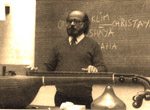![Show/hide content [x]](themes/dragonfly/images/minus.png) Menu Principale Menu Principale HOME HOME NADA YOGA NADA YOGA AMBIENTI SONORI AMBIENTI SONORI VISUAL SOUND VISUAL SOUND MUSICA LIVE MUSICA LIVE INDIAN MUSIC INDIAN MUSIC UTILITA' UTILITA' AREA RISERVATA AREA RISERVATA![Show/hide content [x]](themes/dragonfly/images/minus.png) Info Utente Info UtenteBenvenuto Anonimo
![Show/hide content [x]](themes/dragonfly/images/minus.png) Floating Sarod Floating Sarod![Show/hide content [x]](themes/dragonfly/images/minus.png) Discografia Discografia![Show/hide content [x]](themes/dragonfly/images/minus.png) ![Show/hide content [x]](themes/dragonfly/images/minus.png) Visite Visite |
 Il Mantra OM
Il Mantra OM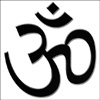 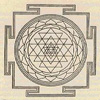  ricmisto@gmail.com cell. +39 328 2074908 * cell. +39 340 5415084 - Tel.+39 049 600491 - Via T. Vecellio 77, 35132 Padova (Italy) Il Mantra OM è il più importante e antico mantra che la tradizione Hindu ha elaborato più di cinquemila anni fa. Per "mantra" si intende una particolare vibrazione che ha la proprietà di muovere e convogliare in specifici punti del corpo fisico, psichico ed eterico, l'energia vitale del Prana, producendo così determinati mutamenti dello stato di coscienza, tali da indurre consistenti modificazioni nei diversi piani di esistenza. Nel mantra non vi è niente di magico o di mistico, ma soltanto il prodursi di effetti psico-fisici su basi rigorosamente logico-matematiche. Ciò non esclude che il mantra Om sia investito anche di aspetti più specificatamente "religiosi": il culto Ganapatya (in seguito assorbito nell'Induismo) ritiene che OM, o il Mantra Pranava come viene chiamato il simbolo di questa deità - si incarni nella forma di Ganesha (metà uomo e metà elefante), comunemente chiamato anche Ganapati o Vinayaka. Simbolicamente Ganesha è colui che rimuove gli ostacoli, e tale definizione ben si ricollega con lo scopo fondamentale del mantra OM, che è appunto quello di rimuovere l'ostacolo dei blocchi energetici emotivi. Anche da un punto di vista grafico, il simbolo dell'OM è una stilizzazione dell'elefante. Etimologicamente la parola mantra deriva dalla combinazione delle due parole sanscrite manas (mente) e trayati (liberare). Il mantra si può quindi considerare come un suono in grado di liberare la mente dai limiti che ne restringono la portata. Il mantra permette di raggiungere quel particolare livello della mente, detto mente pura e primitiva, cioè non condizionata dall'emotività o dalla eccessiva intellettualità, fattori questi che riducono e limitano il potenziale energetico dell'essere umano, ostacolando e rallentando il completo fluire delle correnti elettromagnetiche. I mantra sono suoni molto potenti, che rilasciano grande energia all'interno del corpo fisico, e a quel punto qualcosa succede anche alla mente. I suoni dei mantra non hanno necessariamente un significato, sono semplicemente vibrazioni sonore energetiche. I Mantra sono stati composti, nei tempi antichi, da veggenti che conoscevano i segreti del potere dei suoni. Essi hanno formulato delle sillabe simboliche, unite da alcune leggi codificate nel Libro delle Formule Ermetiche, il Mantra Shastra. Il senso è sempre mlteplice e profondo, e allorché i mantra sono legati alla loro origine dalla catena ininterrotta dell'iniziazione, diventano infallibili. Esistono dei mantra adoperati per vari scopi: il maggiore dei mantra è la sillaba sacra OM, che rappresenta l'aspetto più elevato ed astratto del divino. La ripetizione ritmica di un mantra si chiama japa. Esiste una serie di mantra detti cavacians, che danno una particolare protezione mentale, una specie di armatura che, rinforzando il campo elettromagnetico, agiscono da schermo alle vibrazioni negative provenienti da fonti cosmiche (macchie solari, influenze astrali planetarie ecc.), meccaniche (radiazioni elettromeccaniche di elettrodomestici, computers ecc.) nonché psichiche. Si distinguono tre tipi fondamentali di mantra: innanzitutto il beeja mantra (seme), costituito da un solo fonema, come nel caso dell'OM. Vi è poi il pada mantra, basato su di una singola parola. Infine il mala mantra (ghirlanda), formato da una serie di parole messe assieme. I suoni stessi delle note musicali indiane (SA RI GA MA PA DHA NI) sono considerati "mantrici", in quanto hanno la proprietà di indirizzare l'energia vibratoria in particolari e specifici punti del corpo fisico. Associati poi ad una dterminata altezza (frequenza) e rapportati alla nota tonica di base, vengono arricchiti di un valore psichico-emotivo in grado di muovere la coscienza, aiutando così il processo di pulizia dei cosiddetti blocchi emotivi. Esiste anche la possibilità di rappresentare un mantra con una forma grafico-geometrica, detta Yantra. Tale forma, per il mantra OM, è rappresentata dal cosiddetto Sri Yantra:si tratta di una composizione concentrica nonupla, cioè con nove componenti, fra cui una serie di triangoli. Quattro con la punta verso l'alto (vahni), che rappresentano la polarità mascolina, e cinque con la punta verso il basso (shakti), simbolizzanti l'energia femminile. Per qualsiasi tipo di mantra, affinché si producano gli effetti associati, sono necessarie specifiche prerogative essenziali che possiamo riassumere in: esatta pronuncia fonetica dei suoni, giusta intonazione melodica e corretta ripetizione ritmica. Senza l'osservanza di queste regole basilari, non si avrà alcun effetto. Ciò spiega la necessità di un apprendimento diretto da una fonte autorevole che sola, attraverso l'insegnamento orale secondo la tradizione maestro-discepolo, può garantire i risultati per cui il mantra è stato ideato. Nel mondo occidentale, ma ormai anche nella stessa India, si è via via persa l'originaria conoscenza di questa materia, tanto che oggi non si sa più neanche perché si recita un mantra, e ancor meno la sua esatta formulazione. Il Mantra OM non è più intonato correttamente e per i fini originari: si è persa l'esatta cognizione di tutto il sistema, e i vari maestri yoga non sanno assolutamente recitare il mantra nel giusto ed efficace modo, storpiandolo e adattandolo senza alcuna cognizione di causa. Grazie agli studi del prof Vemu Mukunda, che ha saputo far rivivere l'antica scienza del mantra, si è oggi ancora in grado di conoscere l'esatta pronuncia e intonazione del mantra OM: dalla scomposizione nei tre suoni AUM alla corretta esecuzione ritmico-melodica, all'alternanza della modalità ahata (con vibrazione acustica) con quella anahata (solo mentale), fino all'associazione del suo canto con la frequenza corrispondente alla propria Nota Tonica , il suono base che caratterizza ogni individuo. Solo il rispetto di questi importantissimi parametri permette di far scaturire gli effetti di questo mantra, indirizzati alla pulizia dei blocchi emotivi e alla trasformazione e conversione dell'energia stagnante, da utilizzare per fini creativi e autoterapeutici. Nei miei seminari e corsi di Nada Yoga, che seguono rigorosamente i principi e i fondamenti esposti dal maestro Mukunda, si può apprendere l'esatta pronuncia e la corretta tecnica di questo come di altri mantra, sempre legati all'originaria formulazione e al loro scopo specifico. Solo dall'apprendimento diretto si potranno capire e riprodurre esattamente queste antichissime e potenti vibrazioni, in cui è racchiusa tutta la scienza dei Veda.  A SCUOLA DA MUKUNDA: ESTRATTO DA UN SEMINARIO DI NADA YOGA A SCUOLA DA MUKUNDA: ESTRATTO DA UN SEMINARIO DI NADA YOGA 1. SPIEGAZIONE DEL MANTRA "OM GAM KLIIM"  Vemu Mukunda
Vemu Mukunda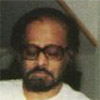 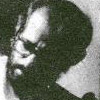   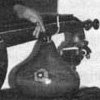  ricmisto@gmail.com cell. +39 328 2074908 * cell. +39 340 5415084 - Tel.+39 049 600491 * Via T. Vecellio 77, 35132 Padova (Italy) La tradizione storica ci ha dato due sistemi di sofisticata musica indiana: Hindustani al Nord e Karnatak al Sud. La ricchezza di entrambi gli stili di musica è stata rivelata al pubblico statunitense, russo ed europeo, attraverso i virtuosismi di Shri Vemu Mukunda.
Vemu Mukunda nacque in India l'11 Marzo 1929 a Bangalore e morì a Londra il 4 Febbraio 2000.
Fu un brillante studente universitario in India. In seguito si recò in Scozia per un corso di specializzazione post laurea. Si stabilì quindi in inghilterra, dove trovò lavoro nel campo della Fisica Nucleare. Proveniente da una famiglia con una ricca tradizione musicale, Vemu aveva imparato a suonare la Veena sotto la guida di A.S.Chandrasekharah, nipote del grande innovatore della musica Karnatak Seshanna nella città di Mysore. aveva suonato anche con vari maestri Hindustani ed appreso il Pallavis da Chittor Subramaniam.
Vemu Mukunda aveva abbandonato una promettente carriere in ingegneria nucleare per seguire la sua passione per la musica, come un gradino verso la realizzazione musicale. In india era stato invitato a suonare al "Sancta Santorum" del Tempio Venkateswara a Tirupati, raro evento che ci dà la misura del consenso accordatogli nel suo Paese d'origine.
Solitamente Vemu Mukunda arrivava dall'India in maggio per risiedere, con i suoi percussionisti di Bangalore, a Londra, dove restava fino a dicembre per far fronte ai suoi ingaggi in occidente, accettando concerti, conferenze, programmi radio e TV.
Oltre a tenere concerti, conduceva ricerche, corsi e seminari sull'effetto del suono e della musica sulla mente e sul corpo.
Grazie ai suoi studi, che si basavano su antichi testi e trattati Hindu sul suono, aveva sviluppato e tramandato il Nada Yoga, la branca della scienza yoga sulla vibrazione, rendendo questa disciplina fruibile anche dall'uomo occidentale. Con le tecniche da lui ideate era riuscito a far conoscere ai suoi allievi e pazienti il corretto uso del Mantra OM, che permette la rimozione dei blocchi emotivi e la trasformazione e conversione dell'energia inutilizzata, a tutto vantaggio della pulizia della mente. A lui si deve soprattutto la ri-scoperta e codificazione della Nota Tonica personale, il suono-base che caratterizza ogni essere umano, grazie al quale sono possibili una serie di tecniche autoterapeutiche su basi matematiche che danno dignità e valore scientifico a tutto il suo sistema musicoterapeutico, denominato "Nada Brahma Yoga" .
Dal 1990 al 1992, dopo aver frequentato un suo seminario a Montecatini, sono diventato suo allievo, frequentando il corso triennale in Musicoterapia NadaBrahama Yoga da lui tenuto in Lombardia, a Torre de Busi in provincia di Bergamo. Sono stati tre anni intensi di grande approfondimento di una materia vasta e affascinante, grazie al quale ho potuto un po' alla volta mettere in pratica con soddisfazione tutti gli insegnamenti che Vemu Mukunda aveva saputo trasferire con incredibile energia, passione e competenza. In seguito ho avuto modo di continuare il mio rapporto con lui, seguendolo e facendo da traduttore ai suoi seminari in Italia. Ho anche avuto la fortuna e il piacere di essere suo ospite in India, a Bangalore, dove aveva organizzato per me una serata musicale (Gandharva Vidya Niketan), facendomi esibire con musicisti locali: per l'occasione avevo suonato la chitarra e lo yanchin. Avevo inoltre tenuto una breve conferenza sul Canto Armonico (Overtones), facendo alcune dimostrazioni in pubblico. Purtroppo la sua prematura scomparsa ci ha privato di un raffinato musicista e un instancabile ricercatore e innovatore. Il Corso di Formazione in Musicoterapia Nada Yoga, attivo a Padova e Roma, vuole essere anche un omaggio a questo grande Maestro, nella speranza che altre persone possano venire a conoscenza della materia e diffonderla correttamente, secondo la tradizione che lui aveva saputo così sapientemente mettere a disposizione del mondo occidentale, dando finalmente una connotazione scientifica e spirituale al tempo stesso al tanto abusato termine "musicoterapia".  A SCUOLA DA MUKUNDA A SCUOLA DA MUKUNDA In questa sezione vengono riportati alcuni files audio con la registrazione di estratti da un seminario tenuto a Padova dal prof. Mukunda il 21/09/1992, dove ho avuto il piacere e l'onore di assisterlo nella traduzione. 1. DECODIFICA DEL SUONO 2. LA TONICA PERSONALE 3. MOVIMENTO COSCIENZA 4. SPIEGAZIONE DEL MANTRA "OM GAM KLIIM"  MUKUNDA MUSIC MUKUNDA MUSIC Un estratto da una registrazione musicale (in cassetta) di Vemu Mukunda alla Sarasvati Veena, accompagnato dai suoi percussionisti Ravishankar (mridangam) e Prakash (ghatam): 1. RAGA HAMSADWANI  La Tonica Personale
La Tonica Personale ricmisto@gmail.com cell. +39 328 2074908 * cell. +39 340 5415084 - Tel.+39 049 600491 * Via T. Vecellio 77, 35132 Padova (Italy) COS'E' LA TONICA PERSONALE E'la nota fondamentale della voce,la frequenza-base,espressa in Hz (Hertz), che caratterizza il tono della voce di ogni persona: corrisponde ad una delle 12 note in cui viene suddivisa l'ottava musicale. Ad ogni tonica si associano determinate caratteristiche generali della personalità e del carattere. Quando siamo calmi e tranquilli siamo nella nostra tonica, che viene collocata fisicamente nella zona dell'ombelico. Ogni emozione viene a spostare il punto in cui si trova la nostra coscienza (consapevolezza), alterando lo stato naturale di quiete. Dal momento in cui la tonica si fissa (nel periodo della pubertà), rimarrà la stessa fino alla menopausa e all'andropausa.
Nei rapporti interpersonali la tonica gioca un ruolo molto importante, venendo ad influire sulla qualità delle relazioni: molti problemi psicologici possono essere individuati e superati proprio agendo sulla tonica. E' possibile, con particolari tecniche del Nada-Yoga, stabilizzare la propria tonica, rinforzando gli aspetti positivi del carattere, migliorando l'efficienza psicofisica generale e contribuendo al progresso sul cammino spirituale. IL RILEVAMENTO DELLA NOTA TONICA PERSONALE Per il rilevamento della nota tonica personale è prevista una seduta individuale di 45 minuti circa Alla fine dell'incontro verrà consegnato uno schema scritto e una guida pratica (CD) per eseguire le tecniche basandosi sulla frequenza stabilita: in questo modo è possibile lavorare con maggior precisione, aumentando sensibilmente l'efficacia degli esercizi proposti.
Per agevolare lo svolgimento della seduta è utile predisporsi al rilevamento dopo essere rimasti per una decina di minuti in silenzio e in tranquillità. Vi verrà chiesto di: 1. Sedere comodamente su una sedia, con il busto dritto ma rilassato. 2. Chiudere gli occhi e tenerli chiusi per tutta la durata del rilevamento. 3. Concentrarsi in particolari punti del corpo secondo le istruzioni 4. Parlare, a richiesta, dicendo brevi frasi spontanee nella lingua abitualmente usata, senza intellettualizzare o fare domande. A conclusione della seduta verrà assegnata e analizzata la nota tonica personale, con la spiegazione dei tratti generali della personalità, delle potenzialità individuali e delle altre note influenti. Un CD servirà poi come guida per mettere correttamente in pratica le principali tecniche del Nada-Yoga, servendosi della nota tonica personale. Verà insegnato come intonare il Mantra OM nel modo corretto, al fine di rimuovere i blocchi emotivi che compromettono il completo fluire dell'energia vitale (Prana). Se necessario, verranno consigliate particolari scale musicali e tecniche specifiche per ciascun caso. Il CD fornito contiene anche le tracce delle principali scale musicali del Sud India (Melakarta): in questo modo è più facile cantarle autonomamente e correttamente. LEGGI L'ARTICOLO: http://lnx.nadayoga.it/Immagini/La_terapia_musicale.pdf  Seminari
Seminari ricmisto@gmail.com cell. +39 328 2074908 * - Tel.+39 049 600491 * Via T. Vecellio 77, 35132 Padova (Italy)  STAGE INTENSIVO DI NADA YOGA E CANTO ARMONICO STAGE INTENSIVO DI NADA YOGA E CANTO ARMONICO (Possibilità di effettuare il Rilevamento della Nota Tonica Personale nella pausa pranzo) Seminario esperienziale con la metodologia dello Yoga del Suono Docente:Riccardo Misto (musicoterapeuta e musicista) DATE DEI PROSSIMI STAGE INTENSIVI ONLINE Domenica 6 ottobre 2024 per info e iscrizione: ricmisto@gmail.com 3282074908 Materiale didattico fornito: dispense, tavole illustrate, files audio/video, CD con guida per esercizi canto armonico, software per visualizzazione spettrogramma voce (utile per riconoscere e controllare i suoni armonici prodotti). • Consegna dell’attestato di partecipazione  PROGRAMMA PROGRAMMALA NOTA TONICA PERSONALE La voce di ogni persona emette note tra cui una in particolare che la caratterizza, detta Tonica. Conoscerla permette di comprendere l’essenza della personalità, usarla porta all’armonia interiore. Il rilevamento della nota tonica personale non fa parte del seminario: consiste in una seduta individuale a parte di circa 45 minuti. Alla fine dell'incontro verrà assegnata la nota e sarà consegnato uno schema illustrato, con la spiegazione dei tratti generali della personalità e delle altre note influenti emerse. Sarà fornita una guida pratica su CD per eseguire correttamente la pratica del Mantra OM, delle scale terapeutiche e delle altre tecniche basandosi sulla frequenza stabilita: un software di analisi dello spettro sonoro vocale consentirà al praticante di visualizzare il proprio canto, facilitando così una corretta ed efficace esecuzione. Se necessario, infine, verrà suggerito un programma personalizzato di tecniche e scale musicali specifiche. Per ulteriori informazioni: Dr.Riccardo Misto Tel/Fax.: 049 600491 cell.: 328 2074908 ricmisto@gmail.com  Nada Yoga Introduzione
Nada Yoga Introduzione info@nadayoga.it cell. +39 328 2074908 * cell. +39 340 5415084 - Tel.+39 049 600491 * Via T. Vecellio 77, 35132 Padova (Italy) Nada,in sanscrito, significa vibrazione, cioè suono: il Nada Yoga è una disciplina musicoterapeutica di origine indiana e tibetana che utilizza il suono, la musica e la coscienza (consapevolezza fisica), per ristabilire equilibrio e armonia tra corpo, mente e spirito, risolvendo o alleviando molti problemi psicologici, fisici e fisiologici in modo naturale.
I fondamenti teorici del Nada Yoga si trovano in antichissimi trattati (Gandharva Veda, Upanishad, Naradiya Shiksha, Sangita Ratnakara ecc.), in cui è stata formulata una teoria generale del suono su basi matematiche, fisiche e metafisiche. Un grande sviluppo a questa antichissima disciplina è stato dato dagli studi e dalle ricerche del musicista e musicoterapeuta indiano, Sri Vemu Mukunda di Bangalore. Il principio fondamentale del Nada Yoga è quello della Tonica, la frequenza-base diversa per ciascuna persona, su cui vengono impostate tutte le tecniche, che prevedono l'uso della voce e del canto elementare: il risultato più immediato consiste nel raggiungere la mente rendendola calma e libera da emozioni e inibizioni intellettuali (mente incondizionata). L'uso poi di appropriati Mantra (vibrazioni sonore che attuano il corretto e funzionale movimento del prana con conseguente ridistribuzione di energia) e di specifiche scale musicali ricavate dallo schema Melakarta del Sud India (impostate ed eseguite sulla nota tonica individuale), consente di toccare particolari punti del corpo fisico e psico-eterico (nadi) e della sfera emotiva (shrutis), rimuovendo dal subconscio i blocchi energetici negativi convertendoli in positività per fini autoterapeutici e per favorire e sviluppare la creatività. L'individuazione e l'uso di del Ritmo Naturale, anch'esso diverso per ogni individuo, permette di adeguare ogni attività ad un dato ritmo di riposo, a tutto vantaggio della resistenza fisica e della lucidità mentale. Particolari tecniche ritmofonetiche Takadimi inducono una attivazione neurosensoriale che incrementa le sinapsi cerebrali, migliorando l'attenzione, la concentrazione, la memoria e l'intelligenza. Le tecniche strettamente musicoterapeutiche sono inoltre affiancate da una serie di esercizi che consentono il progressivo sviluppo della forza mentale per l'attivazione e la distribuzione di energia ionica per l'allineamento e il rafforzamento dei campi elettromagnetici del corpo umano: ciò favorisce la circolazione sanguigna, agisce sulla struttura ossea e muscolare, rallenta il processo di invecchiamento delle cellule e assicura una valida protezione fisica e mentale. L'addestramento ad esercizi di Meditazione, attraverso la pratica del Canto Armonico (Overtones), permette infine di ottenere il particolare stadio di riposo della mente (niroda) equivalente a quello raggiungibile solo ad un particolare livello del sonno (onde cerebrali delta). Nada Yoga è la Scuola di Musicoterapia Yoga del Suono e Canto Armonico di Riccardo Misto, che si prefigge il compito di continuare le ricerche e la didattica sul suono, la musica e la terapia, intraprese dopo aver conseguito il diploma in Nada Brahma System of Musictherapy con il Prof.Vemu Mukunda NADA YOGA STORE: qui trovi tutti i prodotti (E-Book,libri, CD, ecc.)
 |
Cerca
![Show/hide content [x]](themes/dragonfly/images/minus.png) A Scuola da Mukunda
![Show/hide content [x]](themes/dragonfly/images/minus.png) |
© 2016 Riccardo Misto - Nada Yoga Musictherapy - P.I.04622290288
Interactive software released under GNU GPL, Code Credits, Privacy Policy
Interactive software released under GNU GPL, Code Credits, Privacy Policy





